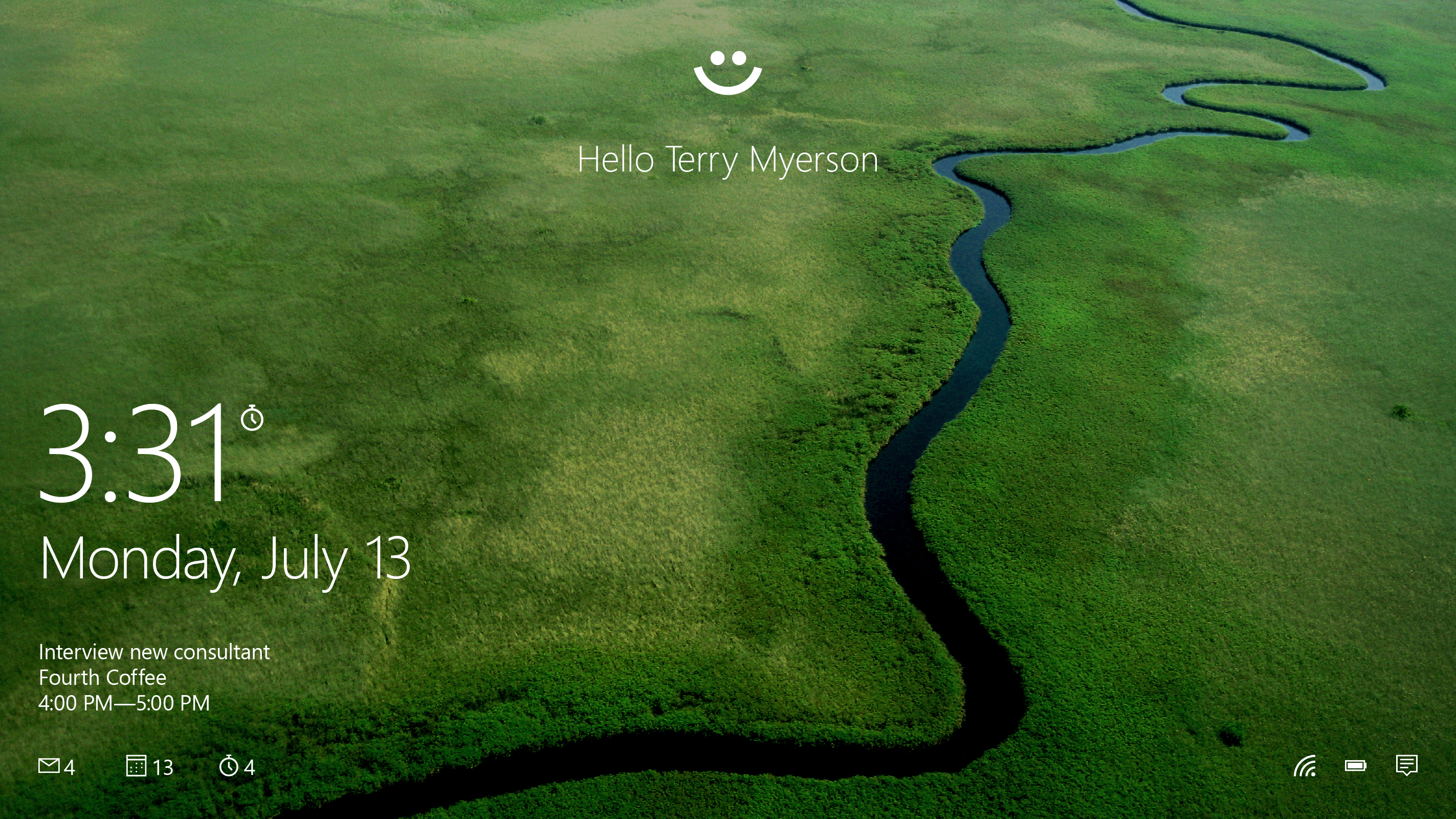Microsoft today announced that biometric authentication is coming to Windows 10. Windows Hello will let you unlock your Windows 10 device, whether it be a PC, tablet, or a smartphone, with your finger, iris, or face. Microsoft Passport will take this further by letting you access apps and online services without a password.
Microsoft describes Windows Hello as “biometric authentication which can provide instant access to your Windows 10 devices.*” That asterisk is no typo. The fine print states that Windows Hello requires specialized hardware, “including fingerprint reader, illuminated IR sensor or other biometric sensors.”
https://www.youtube.com/watch?v=1AsoSnOmhvU
In other words, this is a long-term play. Microsoft is well aware that many Windows 10 devices will be built to be sold for as little as possible, and Windows Hello simply won’t be available.
Nevertheless, Microsoft promises “plenty of exciting new Windows 10 devices” that will support Windows Hello. Devices that already have a fingerprint reader and can be upgraded to Windows 10 should also work with Windows Hello.
For both iris and facial recognition, Windows Hello will leverage special hardware (such as Intel’s RealSense 3D cameras) and software to accurately verify your identity. Microsoft promises a picture of your eye or your face won’t work. Infrared technology will ensure that you can be recognized in a variety of lighting conditions.
Windows Hello is an important security feature, as the company says that the functionality is not just more convenient than typing a password. That’s because Windows Hello will support authenticating applications, enterprise content, and “even certain online experiences” without storing a password on the device or a server.
Microsoft explains why it believes this is progress:
You — uniquely you — plus your device are the keys to your Windows experience, apps, data and even websites and services – not a random assortment of letters and numbers that are easily forgotten, hacked, or written down and pinned to a bulletin board. Modern sensors recognize your unique personal characteristics to sign you in on a supporting Windows 10 device.
Of course, convenience and simplicity should never sacrifice security and privacy. Windows Hello offers enterprise-grade security that will meet the requirements of organizations with some of the strictest requirements and regulations. It’s a solution that government, defense, financial, health care and other related organizations will use to enhance their overall security, with a simple experience designed to delight.
The company goes as far as to hint that it wants to unseat passwords as the primary method for protecting our personal information. Instead of having to create and remember multiple complex passwords, Windows 10 will make you the password.
To make this possible, Microsoft needs to woo IT managers, software developers, and website authors to support Windows Hello. The company has created a programming system, codenamed Passport, so they can let users sign in to their sites and apps without a password. If Windows Hello is not supported by the user’s hardware, Passport will fall back to asking for a PIN or password.
Windows Hello will store your biometric signature locally on the device to be used for just two purposes: unlocking your Windows 10 device and using Passport. In addition to various apps and websites, Microsoft also expects Passport to work with thousands of enterprise Azure Active Directory services at launch.
Last but not least, using Windows Hello and Passport will be opt-in, not opt-out. That means it is completely optional. That means the password won’t be killed off anytime soon, but everyone knows that wouldn’t happen overnight anyway, even with multiple tech companies pushing for it.
VentureBeat's mission is to be a digital town square for technical decision-makers to gain knowledge about transformative enterprise technology and transact. Learn More


